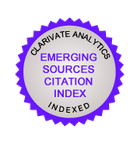Characteristic of the Mycobacterium tuberculosis genome of Beijing genotype of cluster 100-32 displaying pre-extended drug resistance
https://doi.org/10.29235/1561-8323-2023-67-3-231-241
Abstract
A whole genome sequencing was performed of strain M. tuberculosis 11502 (NCBI biosamples database, access code SAMN17832565) that was assigned to the Beijing genotype subtype B0/W148 of cluster 100-32, based on the MIRU- VNTR loci (n = 24) structure, a nd t hat exhibited pre-extended d rug resistance. M. tuberculosis 11502 was resistant to isoniazid, rifampicin, ethambutol, levofloxacin, and ethionamide, which correlated with the presence of mutations in the genes: resistance to isoniazid – the mutations in the fabG1 promoter (p.-8T>C), the katG promoter (p.S315T), to ethionamide – the mutations in ethA (deletion of T at position 4 335 027 (gatgc-gagc)); to fluoroquinolones – in the gyrA gene (p.D94G); to ethambutol – in the embB gene (p.M306I); to streptomycin – in the rpsL gene (p.K43R). M. tuberculosis 11502 genome (Gen- Bank NCBI access code – CP070338) contained 4 420 561 base pairs, 4 104 genes, 4 053 CDSs (coding proteins – 3 874) and differed from reference strain M. tuberculosis H37Rv by the presence of 2 055 mutations. A slight drift of mutations towards the G+C accumulation was revealed, which indicates the importance of maintaining a high G+C content in the Mycobacterium spp.genome Strain M. tuberculosis 11502 has a higher number of mutations in comparison to previously sequenced M. tuberculosis 4860 (GenBank Access Code, NCBI: CP053092) belonging to the LAM genotype (2055 vs. 1577 mutations), which may be a consequence of a longer circulation of M. tuberculosis 11502, or some biological features providing the promutagenic effect.
About the Authors
V. V. SlizenBelarus
Slizen Veronika V. – Ph. D. (Medicine), Associate Professor, Doctoral Candidate
157, Dolginovski tract, 220080, Minsk, Republic of Belarus
A. E. Akhremchuk
Belarus
Akhremchuk Artur E. – Researcher
2, Kuprevich Str., 220114, Minsk, Republic of Belarus
L. K. Surkova
Belarus
Surkova Larisa K. – D. Sc. (Medicine), Professor, Head of the Department
157, Dolginovski tract, 220080, Minsk, Republic of Belarus
G. L. Gurevich
Belarus
Gurevich Gennady L. – Corresponding Member, D. Sc. (Medicine), Professor, Director
157, Dolginovski tract, 220080, Minsk, Republic of Belarus
L. P. Titov
Belarus
Titov Leonid P. – Academician, D. Sc. (Medicine), Professor, Head of Laboratory
23, Filimonov Str., 220114, Minsk, Republic of Belarus
References
1. Allué-Guardia A., García J. I., Torrelles J. B. Evolution of drug-resistant Mycobacterium tuberculosis strains and their adaptation to the human lung environment. Frontiers in Microbiology, 2021, vol. 12, art. 612675. https://doi.org/10.3389/fmicb.2021.612675
2. Cole S., Brosch R., Parkhill J., Garnier T., Churcher C., Harris D., Gordon S. V. [et al.]. Deciphering the biology of Mycobacterium tuberculosis from the complete genome sequence. Nature, 1998, vol. 393, no. 6685, pp. 537–544. https://doi.org/10.1038/31159
3. Chakraborty P., Bajeli S., Kaushal D., Radotra B. D., Kumar A. Biofilm formation in the lung contributes to virulence and drug tolerance of Mycobacterium tuberculosis. Nature Communications, 2021, vol. 12, no. 1, art. 1606. https://doi.org/10.1038/s41467-021-21748-6
4. Dos Vultos T., Mestre O., Rauzier J., Golec M., Rastogi N., Rasolofo V., Tonjum T., Sola C., Matic I., Gicquel B. Evolution and diversity of clonal bacteria: the paradigm of Mycobacterium tuberculosis. PloS One, 2008, vol. 3, no. 2, art. e1538. https://doi.org/10.1371/journal.pone.0001538
5. Hillemann D., Warren R., Kubica T., Rüsch-Gerdes S., Niemann S. Rapid detection of Mycobacterium tuberculosis Beijing genotype strains by real-time PCR. Journal of Clinical Microbiology, 2006, vol. 44, no. 2, pp. 302–306. https://doi.org/10.1128/jcm.44.2.302-306.2006
6. Mokrousov I., Narvskaya O., Vyazovaya A., Otten T., Jiao W.-W., Gomes L. L., Suffys P. N., Shen A.-D., Vishnevsky B. Russian “successful” clone B0/W148 of Mycobacterium tuberculosis Beijing genotype: a multiplex PCR assay for rapid detection and global screening. Journal of Clinical Microbiology, 2012, vol. 50, no. 11, pp. 3757–3759. https://doi.org/10.1128/jcm.02001-12
7. Richter M., Rosselló-Móra R., Glöckner F. O., Peplies J. JSpeciesWS: a web server for prokaryotic species circumscription based on pairwise genome comparison. Bioinformatics, 2016, vol. 32, no. 6, pp. 929–931. https://doi.org/10.1093/bioinformatics/btv681
8. Hershberg R., Petrov D. A. Evidence that mutation is universally biased towards AT in bacteria. PLoS Genetics, 2010, vol. 6, no. 9, art. e1001115. https://doi.org/10.1371/journal.pgen.1001115
9. Seward E. A., Kelly S. Dietary nitrogen alters codon bias and genome composition in parasitic microorganisms. Genome Biology, 2016, vol. 17, no. 1, art. 226. https://doi.org/10.1186/s13059-016-1087-9
10. Sreevatsan S., Pan X. I., Stockbauer K. E., Connell N. D., Kreiswirth B. N., Whittam T. S., Musser J. M. Restricted structural gene polymorphism in the Mycobacterium tuberculosis complex indicates evolutionarily recent global dissemination. Proceedings of the National Academy of Sciences, 1997, vol. 94, no. 18, pp. 9869–9874. https://doi.org/10.1073/pnas.94.18.9869
11. Thwaites G., Caws M., Chau T. T. H., D’Sa A., Lan N. T. N., Huyen M. N. T., Gagneux S. Relationship between Mycobacterium tuberculosis genotype and the clinical phenotype of pulmonary and meningeal tuberculosis. Journal of Clinical Microbiology, 2008, vol. 46, no. 4, pp. 1363–1368. https://doi.org/10.1128/jcm.02180-07
12. Vyazovaya A., Mokrousov I., Solovieva N., Mushkin A., Manicheva O., Vishnevsky B., Zhuravlev V., Narvskaya O. Tuberculous spondylitis in Russia and prominent role of multidrug-resistant clone Mycobacterium tuberculosis Beijing B0/ W148. Antimicrobial Agents and Chemotherapy, 2015, vol. 59, no. 4, pp. 2349–2357. https://doi.org/10.1128/aac.04221-14
13. Lopez B., Aguilar D., Orozco H., Burger M., Espitia C., Ritacco V., Barrera L., Kremer K., Hernandez-Pando R., Huygen K., Van Soolingen D. A marked difference in pathogenesis and immune response induced by different Mycobacterium tuberculosis genotypes. Clinical and Experimental Immunology, 2003, vol. 133, no. 1, pp. 30–37. https://doi.org/10.1046/j.1365-2249.2003.02171.x
14. Perdigão J., Silva C., Maltez F., Machado D., Miranda A., Couto I., Rabna P. [et al.]. Emergence of multidrug-resistant Mycobacterium tuberculosis of the Beijing lineage in Portugal and Guinea-Bissau: a snapshot of moving clones by whole-genome sequencing. Emerging Microbes and Infections, 2020, vol. 9, no. 1, pp. 1342–1353. https://doi.org/10.1080/22221751.2020.1774425
15. Engström A., Antonenka U., Kadyrov A., Kalmambetova G., Kranzer K., Merker M., Kabirov O. [et al.]. Population structure of drug-resistant Mycobacterium tuberculosis in Central Asia. BMC Infectious Diseases, 2019, vol. 19, no. 1, art. 908. https://doi.org/10.1186/s12879-019-4480-7














































